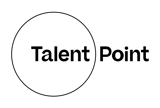What is the STAR technique?
The STAR technique is often used by interviewees when answering competency based interview questions. STAR stands for: Situation, Task, Action and Result.
|
Situation. Describe the situation you were in from a point of no understanding – the business, the project, the people. Task. In relation to the question asked, what were you trying to achieve? Action. Describe the actions you took to perform the task, paying attention to the question you have been asked and the ability you need to demonstrate. Result. Describe the outcome of your action. Again, be specific about the impact of the ability of experience you have been asked to demonstrate and try to include multiple positive results |
How can the STAR technique be used by interviewers?
The STAR technique isn’t just vital for interviewees to be familiar with, but those interviewing also. To better understand the power of STAR, it’s useful for interviewers to workshop what a good STAR answer would look like using criteria for the role they’re hiring.
Here is an example of the type of answer you should be modelling:
|
Situation: In my last role as engineering manager, I was responsible for a cross-functional team that was understaffed and struggling with a large backlog of work. The business was continuing to add more work to our roadmap which was causing us to consistently miss-targets resulting in a stressed team and disappointed stakeholders. Task: As Engineering Manager, it was my job to ensure our team were able to perform their roles correctly to deliver on deadlines and also keep them happy and motivated Action: First I set up a formal process between our business stakeholders and the team which included visibility of timelines and allowed for more accurate estimations. Next, I worked with the team to identify where bottlenecks were accruing and what caused them, solving this by either training more people to perform these tasks or building time in the backlog to automate them away. Lastly, I made sure both our stakeholders and every member of the team understood steps being taken to improve things, so their moral was maintained whilst we addressed the issues Result: By bridging the gap between our stakeholders and the team to provide more visibility and set better expectations, I was able to re-prioritise the to-do’s so backlog items could be completed on time to a revised schedule everyone was happy with. Taking advantage of a less-stressed team, through automating out certain task and training team members in others, we were able to improve our velocity by 15%. This had an added benefit on moral given the team was learning new skills and having to perform less repetitive tasks. |
Modelling example answers like this allows you to see what you believe a good answer looks like for these criteria. It also allows your peers to see what you all think good looks like, if there is a difference then you need to align your thoughts around scoring to ensure it’s fair and equitable to prevent unconscious bias in your interview process.
How to ask questions like a boss (CEO).
Once you have modelled your answer, you want to make sure that you are asking the right questions that elicit STAR answers from interviewees so that you are able to compare their answers against your original model answer, framework and scoring points. In order to do this… you need an acronym of your own. CEO:
|
Context. Describe a situation you or this person is likely to face in their role at the company, and why they will need a particular skill or piece of knowledge. Example. Ask them to provide an example of a specific time they showed this experience or ability. Outcome. Invite the applicant to provide you with an outcome, giving you clear results of what their actions achieved. |
Compare these two questions:
Assume that requirement for the Engineering Manager position was someone who could work with a team to identify blockers and mitigate or remove them to improve their ability to deliver, which question do you think would elicit a better, more comprehensive answer?
|
1. What is your experience helping engineering teams perform better? 2. As a company, ensuring our technology and business stakeholders are aligned is critical to remaining agile and reacting quickly to the needs of our customers. Can you talk me through a time where you’ve successfully helped an engineering team work more effectively with the business and ultimately get more done. |
Hint: it’s the second one.
Structuring your questions like this will allow you to develop your skills as an interviewer. It will also encourage candidates to give more context and relevance to their answers. Being specific will help candidates to provide you with the answers to the questions you really have and by extension, optimising part of your hiring process.
At Talent Point, we take a flexible and agile approach to in-house consultancy to help tech start-ups and scale-ups attract and retain the best talent. We don't only hire the right people, but we assist you realise the why and finding candidates who are aligned with these values too. We help improve current processes to ensure you’re set up for future success and a smoother, more personal candidate experience.
Our Talent Partners are fully embedded in our customer’s organisation, incorporating the flexibility and pace of an agency with the cultural understanding and empathy of an inhouse team. Our approach is customer-centric and data-driven to help customers make more informed and valuable decisions.
Are you curious to learn more about us and the difference we can make to your organisation? Find out more by visiting our Contact Us page and speak to our team.

